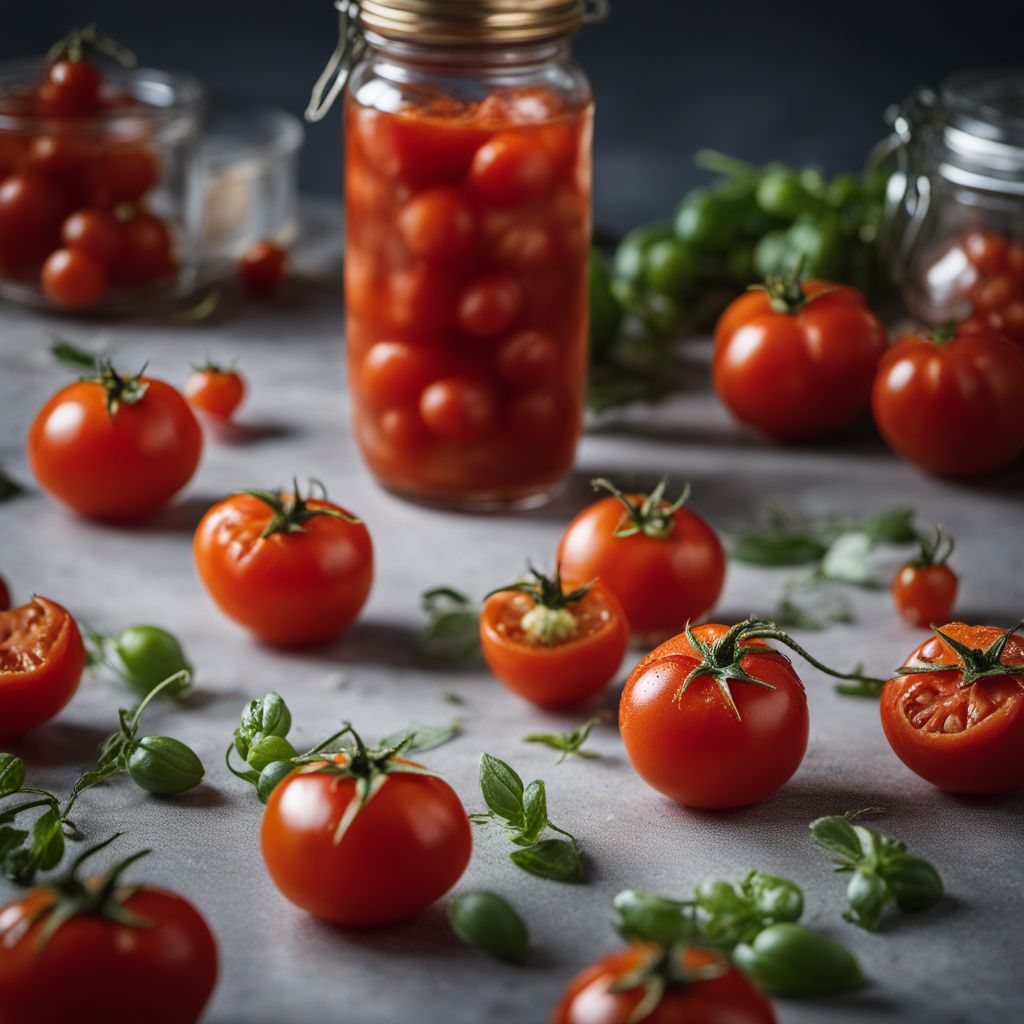
Ingredient
Preserved tomatoes not concentrated
The Tangy Treasure: Preserved Tomatoes
Preserved tomatoes, not concentrated, are tomatoes that have been preserved in a brine or vinegar solution. They have a firm texture and a tangy, slightly sweet taste. The tomatoes retain their vibrant red color and add a pop of brightness to any dish. Preserved tomatoes are a pantry staple that can be enjoyed year-round.
Origins and history
The preservation of tomatoes dates back centuries and has been practiced in various cultures around the world. Preserved tomatoes are commonly used in Mediterranean and Middle Eastern cuisines, where they are a key ingredient in dishes like pasta sauces, stews, and salads. They are also popular in Mexican cuisine, particularly in salsas and enchiladas. Preserved tomatoes offer a convenient way to enjoy the flavor of ripe tomatoes even when they are out of season.
Nutritional information
Preserved tomatoes are low in calories and a good source of vitamins A and C. They also contain lycopene, an antioxidant that may have health benefits. However, they can be high in sodium, so it is important to consume them in moderation, especially for individuals on a low-sodium diet.
Allergens
There are no known allergens associated with preserved tomatoes.
How to select
When selecting preserved tomatoes, look for jars or cans that are intact and properly sealed. Check the expiration date to ensure freshness. The tomatoes should have a vibrant red color and be fully submerged in the preserving liquid. Avoid containers with signs of leakage or bulging lids.
Storage recommendations
To maintain the quality of preserved tomatoes, store them in a cool, dark place, such as a pantry or cupboard. Once opened, transfer any unused tomatoes to a clean, airtight container and refrigerate. Use within a few weeks for optimal flavor.
How to produce
Preserving tomatoes at home can be a rewarding process. It involves sterilizing jars, preparing a brine or vinegar solution, and packing the tomatoes tightly into the jars. The jars should be sealed and stored in a cool, dark place for several weeks to allow the flavors to develop.
Preparation tips
Preserved tomatoes can be used in a variety of dishes, including pasta sauces, soups, stews, and salads. They can be blended into a flavorful tomato sauce or added whole to dishes for a burst of tanginess. Preserved tomatoes are also a great addition to sandwiches, pizzas, and antipasto platters. They can be chopped and mixed with herbs and spices to create a delicious salsa or relish.
Culinary uses
Preserved tomatoes are commonly used in Mediterranean, Middle Eastern, and Mexican cuisines. They are widely available in grocery stores and supermarkets, and can also be found in specialty food stores or online.

